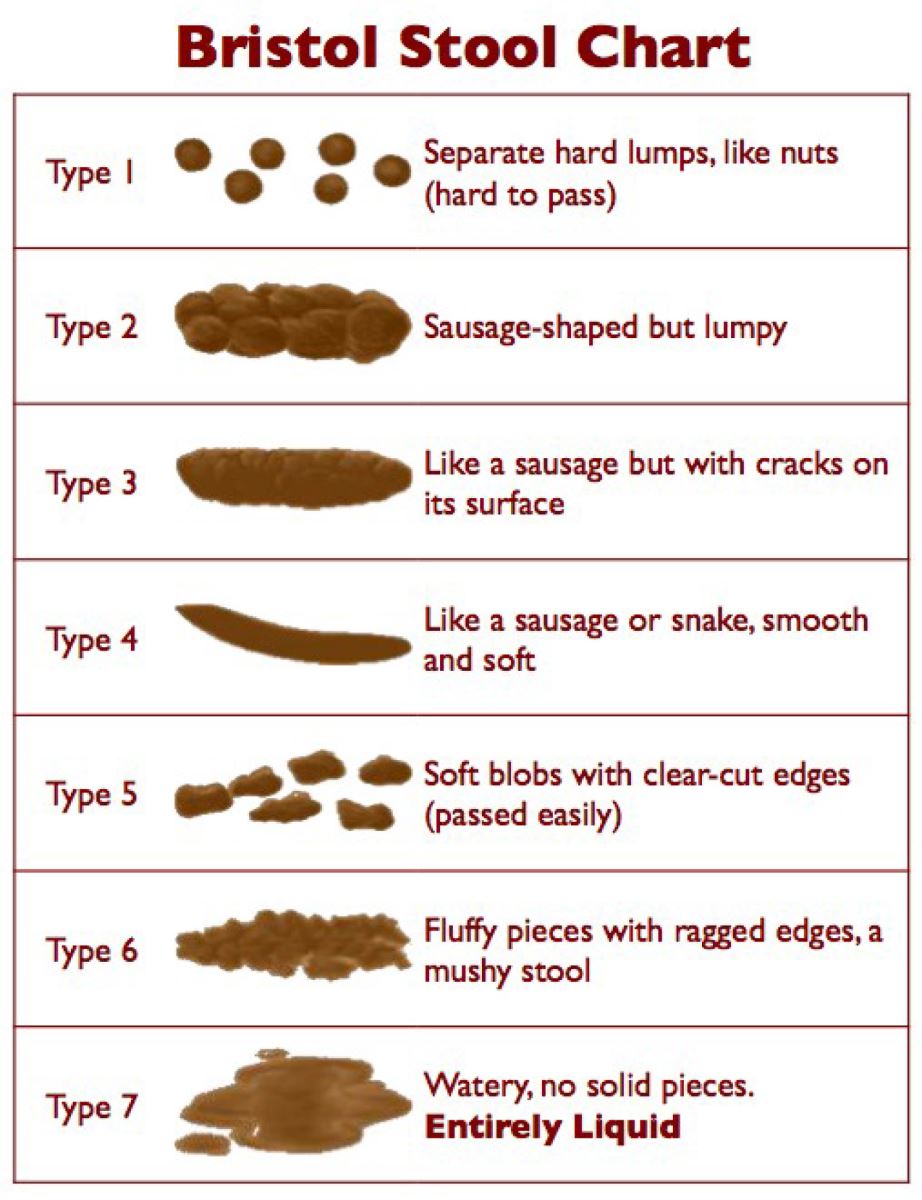Pictures of Different Shapes of Poop
It may sound gross, but paying attention to your bowel movements is actually pretty important. Your bowel habits are a strong indicator of your digestive health. Changes in the color, shape and texture of your stool can reveal signs of infection, digestive issues or more serious health problems, such as cancer.
But how can you determine if your stool is healthy? Michael Cheng, M.D., a Piedmont gastroenterologist, answers this probing question.
"Healthy stool is usually considered a soft, formed bowel movement that is typically brownish in color," says Dr. Cheng. "Stool may be indicative of a health problem if someone notices a change in their bowel habits with constipation or diarrhea, or notices a change in color of their stools. There may also be a problem if a person has signs or symptoms of not feeling well, which could include abdominal discomfort, nausea, change in appetite or change in weight."
The Bristol Stool Scale
Fecal matter is 75 percent water and 25 percent solid matter, consisting of dead bacteria, indigestible food and inorganic substances. It usually takes about three days for food to pass through your system, resulting in a bowel movement. But when food passes through your system too quickly or too slowly, it can affect the size, color and texture of your stool.
The Bristol Stool Scale classifies stool types into seven categories based on size and texture.

Signs of constipation
Types 1 and 2 are hard and lumpy, and painful to pass. These stools have been sitting in the large intestine and colon for a long time and are indicative of someone who may be constipated.
"Constipation can be caused by many factors including medications, dietary changes, stress, or medical illness," says Dr. Cheng.
Signs of healthy digestion
Types 3 and 4 are considered the optimal form of healthy stool. Healthy stool is typically sausage-shaped and snake-like. It is easy to pass, and it remains intact when it is flushed.
Signs of diarrhea
Stool types 5 through 7 are watery and mushy. These stools are in the large intestine and colon for the least amount of time and may present in the form of diarrhea.
"Diarrhea can also be caused by many factors including medications, dietary changes or intolerance, stress, medical illness and infections," says Dr. Cheng.
Stool color and your health
The color of your stool can also be a reflection of your overall health.
"Healthy stool is usually brownish in color," says Dr. Cheng. "There is cause for concern when stool is black or reddish, which may be indicative of gastrointestinal bleeding. Stools that are gray in color may also be concerning for liver problems."
And yellow, greasy, foul-smelling stool indicates that the intestines didn't properly digest and absorb fat. This could be caused by a disease of the intestinal lining such as celiac disease or chronic pancreatitis.
Tips for maintaining healthy bowels
It's important to maintain good bowel health, as 70 percent of the body's immune system is contained within the digestive tract. To keep your bowel movements frequent and healthy, Dr. Cheng suggests the following tips:
-
Eat a balanced, high-fiber diet. Fiber can help prevent or relieve constipation. Try fiber-rich foods like apples, carrots, beans, and whole wheat cereals.
-
Exercise regularly. Exercise can decrease the time it takes for food to move through the large intestine, helping with constipation.
-
Get a colonoscopy. Colonoscopies allow doctors to look for polyps inside the colon and rectum, which could be an early sign of cancer. Consider scheduling a screening if you:
-
Are over 45 years old*
-
Have a personal history of inflammatory bowel disease
-
Have a family history of colorectal cancer or polyps
-
-
Stay hydrated. Water helps to clear toxins from the body. Try to drink at least eight 8 ounce glasses of water a day.
*The American Cancer Society updated its screening guidelines in May 2018, lowering the recommended screening age from 50 to 45.
Need to make an appointment with a Piedmont physician? Save time, book online.
Pictures of Different Shapes of Poop
Source: https://www.piedmont.org/living-better/what-your-stool-says-about-your-health